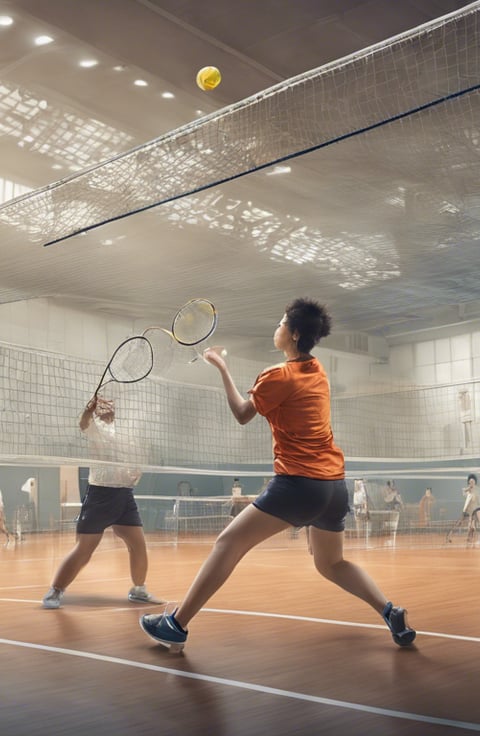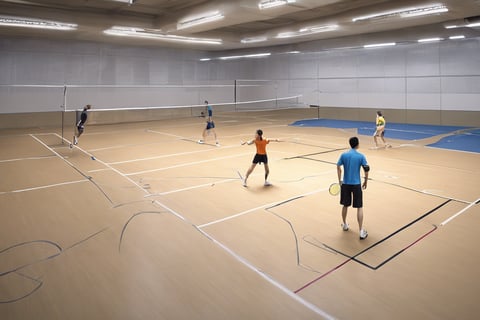Smashing Science: The Biophysics Behind Volleyball and Badminton
Biophysics, a field that merges both the principles of biology and physics, plays a crucial role in understanding and enhancing the performance of athletes, particularly in the sports I am involved in: volleyball and badminton. Both sports demand a unique combination of agility, power, precision, and endurance, and can be better understood and optimized through the lens of biophysics. I began to find an interest in relating biophysics to my sports endeavors after my first few weeks of AP Physics 1 and 2. A hefty subject indeed, I was able to break down the mind-boggling concepts by relating them to my movements and the athletic world around me.
First, was understanding force and motion. In volleyball and badminton, players constantly engage in rapid movements, including jumps, sprints, and numerous directional changes. Biophysics can help in analyzing these movements by examining the forces involved, the mechanics of motion, and the energy expenditure required. For instance, in volleyball, the biomechanics of a spike involve analyzing the angle of the jump, the velocity of the arm swing, and the optimal point of contact with the ball. Similarly, in badminton, understanding the physics behind the shuttlecock's flight and a player's reaction time is crucial for effective gameplay. The efficiency of energy transfer from a player's muscles to their limbs, and ultimately to the ball or shuttlecock, determines the power and precision of their shots.
Moving beyond the court, Biophysics plays a vital role in injury prevention and recovery which is a critical aspect of any athlete's career. The understanding of stress, strain, and the body's biomechanical limits can help ensure an athlete’s safety. Volleyball and badminton players often subject their joints and muscles to repetitive stress (I can vouch for this). Biophysics helps in understanding the load-bearing capacity of different body parts and the harmful effects of overloading. By applying biophysical principles, coaches, trainers, and medical staff can design exercises that strengthen muscles and improve joint stability, eventually reducing the likelihood of injury. Post-injury recovery is another area where biophysics is essential. Understanding the optimal conditions for muscle recovery, such as temperature, pressure, and movement, can accelerate rehabilitation and help players return to their sport in peak condition.
Now, focusing on the design of the equipment used in my two respective sports. For volleyball, a volleyball is created with a certain texture and weight to influence its flight and how well it can be controlled. However, badminton rackets and shuttles have an even greater complexity to them. The design of badminton rackets and shuttlecocks is influenced by biophysical principles. The materials used, the shape and size, and the aerodynamics all play a role in how the equipment interacts with a player and their environment. For instance, the tension in a badminton racket’s strings affects the shuttlecock's speed and trajectory, the rim shape affects the angles the shuttle leaves the racket, and the weight affects a player’s ability to hit certain shots and play different styles of badminton.
In conclusion, the influence of biophysics on volleyball and badminton is profound, offering insights to help players optimize their performance, prevent injuries, and maximize their potential. By understanding the principles of kinematics, force, energy transfer, and biomechanics, many athletes including myself can train more effectively and achieve higher levels of success in our respective sports. As biophysical research continues to evolve, I will continue to learn and contribute my knowledge to hopefully inspire greater advancements in athletic performance and the world of sports science.





